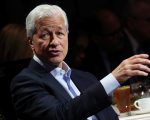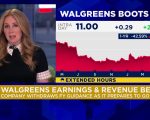
Municipal bonds not only offer solid, tax-free income, but they should also see some capital appreciation later this year, according to UBS. Yields in AAA muni bonds have recently ticked higher, primarily because of the strong supply coming into the market ahead of the election , senior fixed income strategist Sudip Mukherjee said in a note last week. Bond yields move inversely to prices. That means as yields rise, prices decline. The assets are particularly favored by wealthy investors because their interest income is free of federal taxes. This income may also be free of state taxes if the investor resides in the issuing state. Some $45 billion of tax-exempt bonds were issued in September and supply has remained strong in October as issuers pull forward deals before voters head to the polls, Mukherjee wrote. Significant capital expenditure requirements, dwindling Covid funds and tax-exempt refunding of taxable Build America Bonds have also contributed to the year’s abundant supply, he added. “Strong supply combined with lower seasonal redemption demand and the continued possibility of election-driven rate volatility could present some headwinds in the near term,” Mukherjee said. “However, looking beyond the election, we believe the setup is constructive for strong year-end performance, given the combination of higher yields and our expectation of supply cooling following the election,” the strategist added. Meanwhile, the economy is on track for sustained growth at a solid pace, the strategist noted. Consumers are still spending and the combination of job growth, higher wages and slowing inflation should continue to push households’ real disposable income higher, he added. “A stronger economic outlook bodes well for municipal credit, so barring some exceptions, such as small private not-for-profit colleges and hospitals, we expect stable credit outlooks for the major sectors,” Mukherjee said. He continues to like higher-quality munis. Further, the longer end of the muni bond yield curve is also starting to look attractive, he said. Mukherjee specifically likes the 12- to 22-year portion of the curve, with a significant overweight in the 17- to 22-year band given the risk/reward trade-offs. He recommends an effective portfolio duration range of six to six-and-a-half years. Investors hoping to take a diversified approach to municipal bonds may want to consider an exchange-traded fund. The Vanguard Tax-Exempt Bond Index Fund ETF (VTEB) has a 30-day Securities and Exchange Commission yield of 3.28% and an expense ratio of 0.05%. Schwab’s Municipal Bond ETF (SCMB) has an expense ratio of 0.03% and a 30-day SEC yield of 3.25%. Both funds have an effective duration of just more than six years.








